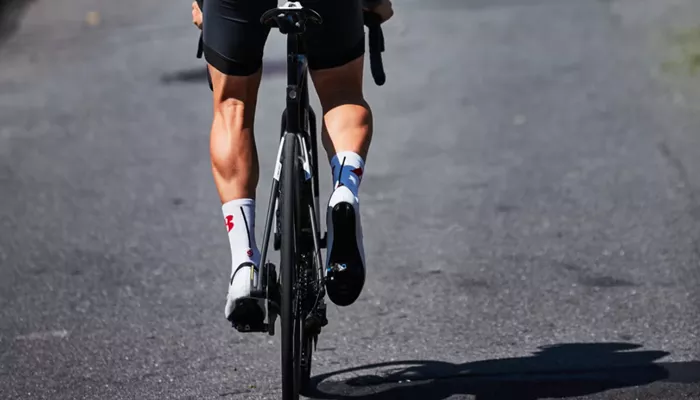Cycling is a popular outdoor activity enjoyed by many. It’s not just a fun way to explore the outdoors; it’s also an effective method for weight loss. This article will delve into how cycling helps with weight loss, the types of cycling, and tips to maximize your weight loss journey.
Understanding Weight Loss
Before diving into cycling, it’s essential to understand how weight loss works. Weight loss occurs when you burn more calories than you consume. This is known as creating a calorie deficit. There are two main components to achieving this: reducing calorie intake and increasing physical activity. Cycling plays a crucial role in the latter.
The Benefits of Cycling for Weight Loss
1. Burns Calories
Cycling is an excellent cardiovascular exercise. Depending on your weight and cycling intensity, you can burn a significant number of calories in a single session. For instance, a person weighing 155 pounds can burn approximately 300 calories in a moderate hour of cycling. If you increase the intensity, you can burn even more.
2. Builds Muscle
While cycling is primarily an aerobic exercise, it also helps build muscle, particularly in your legs. Stronger muscles increase your resting metabolic rate, meaning you burn more calories even when you’re not exercising. Over time, this can contribute to weight loss.
3. Increases Cardiovascular Health
Regular cycling strengthens your heart and improves circulation. A healthier heart can pump blood more efficiently, which supports overall health and can enhance your ability to perform physical activities. This improvement can lead to longer and more intense cycling sessions, contributing to greater calorie burn.
4. Low Impact Exercise
Cycling is low impact compared to running or other high-impact sports. This makes it accessible for people of all fitness levels. It’s easier on your joints, reducing the risk of injury. This aspect allows you to cycle more frequently, which can help with weight loss.
5. Reduces Stress
Exercise, including cycling, releases endorphins, which are natural mood lifters. Reducing stress can help prevent emotional eating, a common barrier to weight loss. By enjoying cycling, you can improve your mental health while also working towards your weight loss goals.
Types of Cycling for Weight Loss
1. Road Cycling
Road cycling involves riding on paved surfaces, often on lightweight bikes designed for speed. This type of cycling can be intense and is great for burning calories quickly. Participating in group rides can also provide motivation and encouragement.
2. Mountain Biking
Mountain biking takes place on rugged terrain and often involves more resistance than road cycling. This type of cycling not only burns calories but also builds muscle due to the varied terrain and elevation changes.
3. Stationary Cycling
Using a stationary bike can be a great option for those who prefer indoor workouts. Many gyms offer cycling classes, which can be an excellent way to keep motivated. Stationary cycling allows you to control your workout intensity and duration.
4. Leisure Cycling
Leisure cycling involves casual rides, often enjoyed in scenic areas. While this might burn fewer calories than intense cycling, it still contributes to your overall activity level. Any form of cycling can help you move toward your weight loss goals.
Tips for Maximizing Weight Loss through Cycling
1. Set Realistic Goals
When starting a cycling routine, it’s important to set achievable goals. Aim for a specific duration or distance each week and gradually increase your targets. This will keep you motivated and help track your progress.
2. Mix Intensity Levels
Incorporate both low-intensity and high-intensity cycling into your routine. High-intensity interval training (HIIT) can be particularly effective. For example, alternate between one minute of fast cycling and two minutes of slower cycling.
3. Maintain a Balanced Diet
Cycling alone won’t lead to weight loss if you don’t maintain a healthy diet. Focus on whole foods, such as fruits, vegetables, lean proteins, and whole grains. Keeping your diet balanced can enhance your cycling performance and support weight loss.
4. Stay Hydrated
Hydration is essential when cycling. Drink water before, during, and after your rides. Staying hydrated helps maintain your energy levels and can improve your performance.
5. Track Your Progress
Use a cycling app or fitness tracker to monitor your rides. Keeping track of your distance, time, and calories burned can help you stay motivated and make adjustments to your routine as needed.
6. Join a Cycling Group
Finding a community of cyclists can enhance your experience. Group rides can provide motivation, make cycling more enjoyable, and help you push your limits. Plus, sharing your journey with others can keep you accountable.
How Often Should You Cycle?
To lose weight effectively, aim to cycle at least 150 minutes a week. This can be broken down into several shorter rides throughout the week. For greater weight loss, consider increasing your cycling time or intensity. The key is consistency.
Common Challenges and How to Overcome Them
1. Lack of Time
Finding time to cycle can be a challenge. Try to integrate cycling into your daily routine, such as biking to work or running errands. Even short rides can contribute to your overall activity levels.
2. Boredom
If you find cycling monotonous, change your routes or try different types of cycling. Listening to music or podcasts while cycling can also make the experience more enjoyable.
3. Weather Conditions
Weather can sometimes limit outdoor cycling. Have a backup plan for indoor cycling, such as using a stationary bike or attending a cycling class. Investing in weather-appropriate gear can also help you stay comfortable while riding outdoors.
Conclusion
Cycling is a fantastic way to aid in weight loss. It burns calories, builds muscle, and promotes cardiovascular health. By incorporating cycling into your routine and following the tips provided, you can achieve your weight loss goals while enjoying the many benefits of this activity. Whether you prefer road cycling, mountain biking, or leisure rides, there’s a cycling option for everyone. So, hop on your bike and start pedaling your way to a healthier you!
Related topics:

